PVCTV
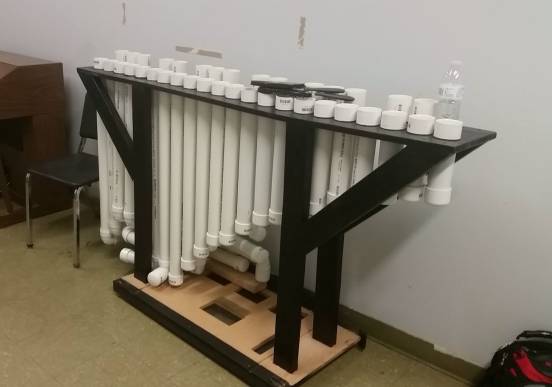
PVCTV: My 3 Octave PVC Pipe Instrument
The basic idea of this instrument is that different notes can be created by changing the length of the pipe to change the pitch. The pipes were tuned using a chromatic tuner to finely adjust the notes. As it gets shorter, the note gets higher. I used caps at the ends of all the pipes to redirect the sound back up through the pipe. This in effect halves the amount of piping you need to make a note. The mallets I use to play them are flip flops duct taped to straight spatulas, simple but effective. The instrument has a suprising amount of volume range; you can play it quite loud. The official name of this model is PVCTV because the bottom base is part of an old TV. That base has wheels which roll very smooth, which make transportation very easy.
Statistics:
Total PVC Pipe Used: 110 ft.
Notes: 37 Notes (3.0 Octave F1-F4)
Longest Note: 6 ft. 8 in.
Build Pictures
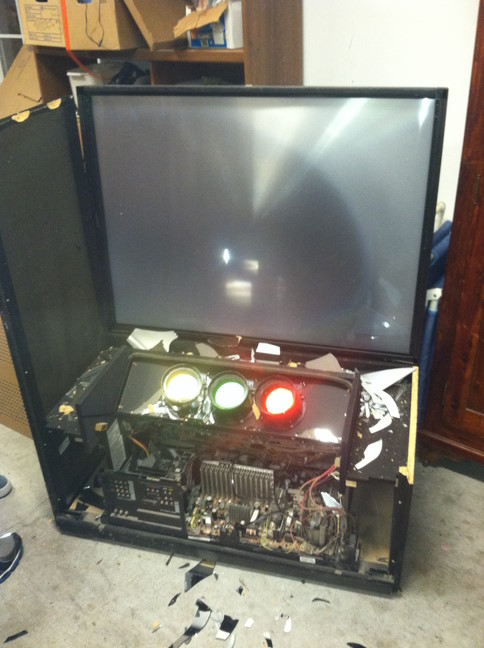
The project all started with the destruction of a giant broken tv. My idea was to build the instrument with the remains of the tv, although in the end I only used the base segment.
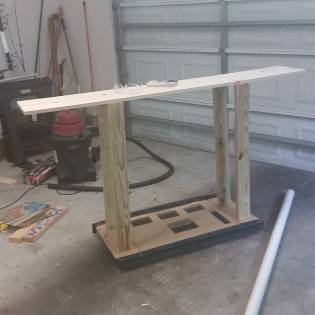
I was quickly able to assemble the basic frame from some 2x4s and the TV base. The width is 6 feet 4 inches.
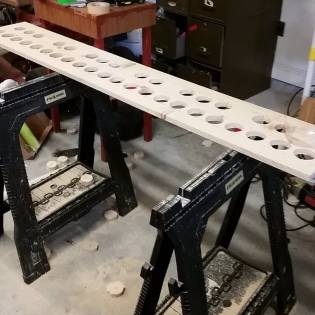
Drilling the holes for the notes. Lots of measuring to make sure that all the holes line up perfectly. The setup is just like a piano with black and white keys.
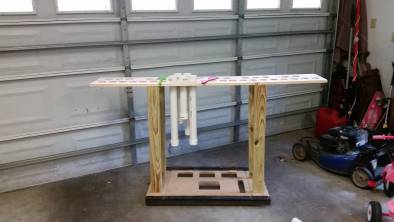
Here the instrument is starting to come together. I just stuck a few notes in to play around with.
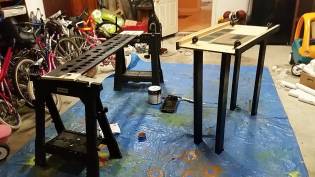
The paint used for this is high quality glossy black paint that we had lying around. The paint job looks really nice. You can also see the reason I wanted to use the TV base on the bottom, it has wheels!
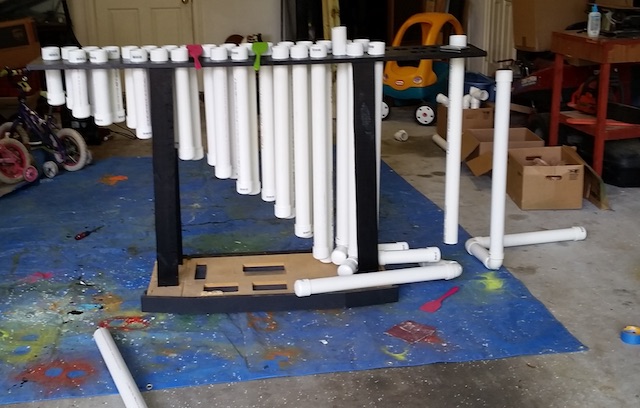
The tuning process isn't that photogenic, so I didn't take any pictures of it. The first 2 octaves were much easier than the bottom one, since the notes go straight down. Once those were completed, I started with the lowest note, and build up from there. My tuning process is just chop a little off and test it with a chromatic tuner. All notes were tuned within a few cents accuracy. (Except for the top ones)
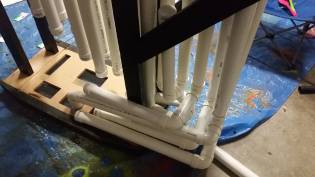
This is mid-construction of the lower octave.
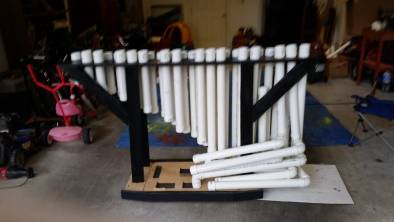
The final notes are cut and tuned. From here, the lower octave had to be secured in place to ensure that it didn't fall apart all the time. To do that, I added a small 2x4 at the bottom for the notes to rest on, and used metal fasteners to tie the notes to each other. Duck tape holds the connections that aren't glued.
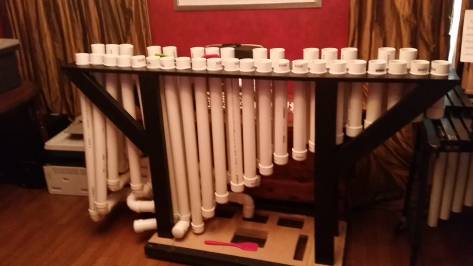
Completed, and in my room for my enjoyment. The spatula at the bottom is actually one of the mallets I used at first to play. A late addition was a set of foam padding on the bottom of the pipe caps at the top. These prevent the pipes from bouncing up and clanking against the wood.